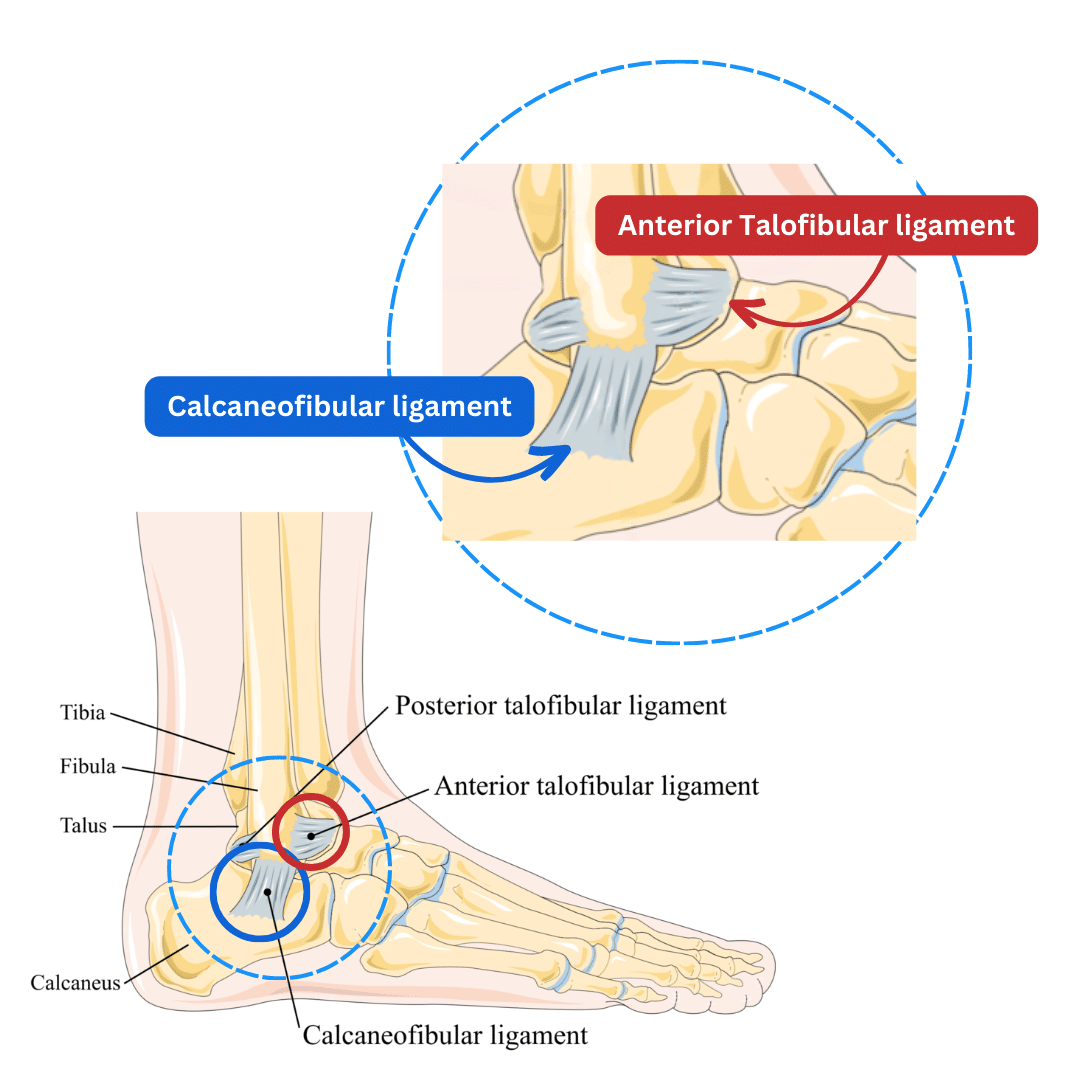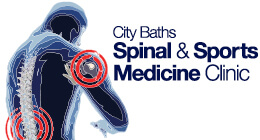Zac Caughey
The winter sport season has begun, and we have seen an influx of ankle injuries, most commonly: lateral ankle sprains. Many people have injured their ankle before, but there are some common misunderstandings about how to best manage an ankle sprain in the first crucial hours.
A lateral ankle sprain refers to damage to the ligaments on the outside of the ankle: The anterior talofibular ligament and the calcaneofibular ligament.
This occurs when the ankle rotates inwards beyond its normal limits, due to excessive force, which puts pressure on the ligaments causing them to partially tear or completely rupture (separate from the bone).

A lateral view of the ankle
The Anterior talofibular and calacaneofibular ligaments are the most commonly damaged in a lateral ankle sprain.
The Do’s:
Initial management should compile of RICER: Rest, Ice, Compression, Elevation and Referral.
Some of the best ways to do this though include:
- Rest: Stop the activity you are currently doing.
- Ice: Rather than an ice pack, use a bucket of water filled with ice and submerge your whole foot and ankle as best you can. This will ensure that the whole ankle is subject to vasoconstriction (reduced blood flow), which will help to reduce swelling and inflammation.
- Compression: Use a compression bandage from the chemist or physiotherapist to ensure that the swelling doesn’t continue to spread. This will make your rehabilitation a lot quicker and easier.
- Elevation: Ensure your ankle is above your hip when lying down so that the fluid can disperse. Standing or sitting will mean the fluid stays stagnant around your ankle.
- Referral: After 48 hours go and see a health professional, for example your physio!
The Don’ts:
- Don’t keep playing or competing in your sport. This can cause excessive swelling and potentially, further injury.
- Don’t use heat. This can increase blood flow and make the swelling worse.
- Don’t use anti-inflammatories in the first 72 hours. This will halt the normal healing response which we need to help recovery.
After the first 48 hours, and once your pain has eased, book in to see your physiotherapist. They will be able to guide you through a quick and safe return to your sport with some strengthening exercises and range of motion therapy.
Have you hurt your ankle recently? Follow our advice above and then book in to have one of our physiotherapists assess your ankle injury.
Learn more about our physiotherapists here, or follow the link below to make an appointment.


